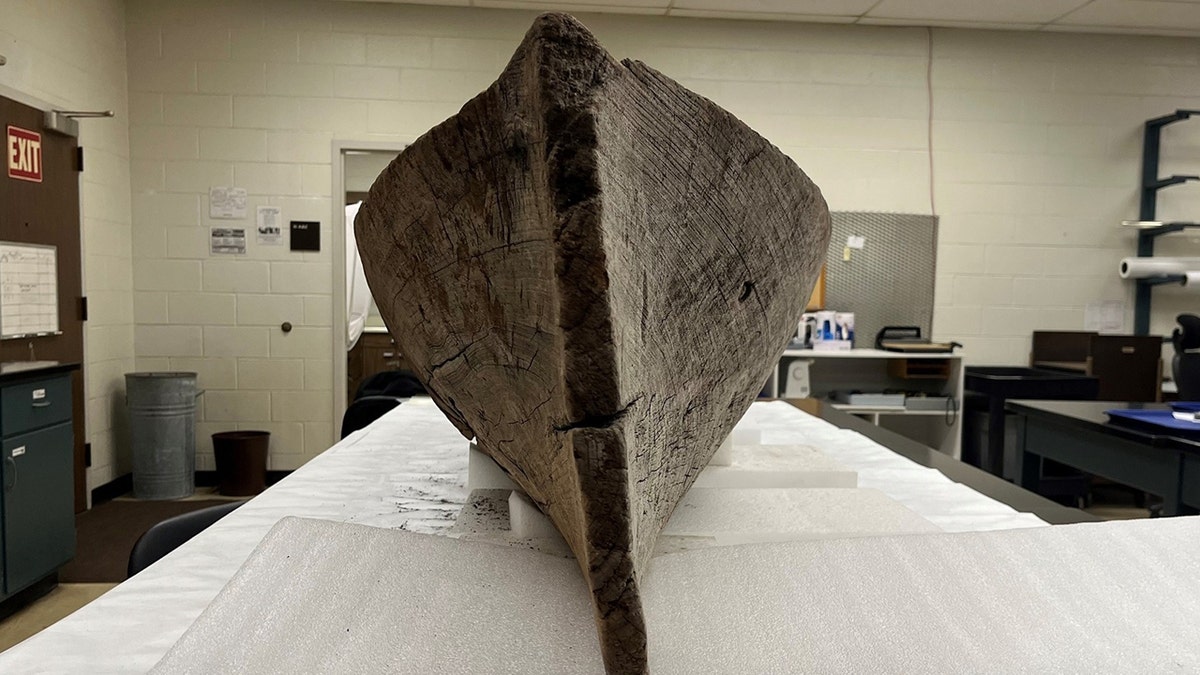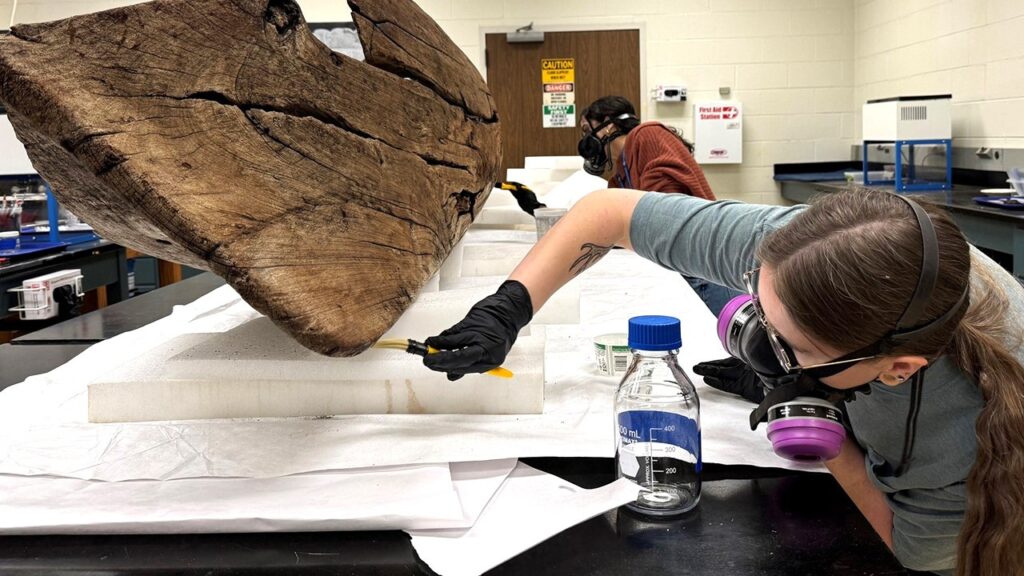NEWYou can now listen to Fox News articles!
A “highly unusual” wooden canoe that was unearthed in the aftermath of Hurricane Ian is still puzzling experts three years later.
The canoe was discovered in Fort Myers, Florida, in fall 2022, according to state officials.
The Florida Division of Historical Resources (FDHR) announced on Sept. 12 that the canoe’s conservation is now complete, yet the mystery of where it came from and how old it is remains.
ENEMY VESSEL THAT EXPLODED DURING 1748 BATTLE MAY HAVE BEEN FOUND IN NORTH CAROLINA RIVER
“The canoe’s form is highly unusual in Florida and research is still ongoing to determine its origin,” the FDHR’s Facebook post said. “Comparisons to similar vessels in the Caribbean suggest that it may have connections to that region.”
“If this is proven, then this canoe may be considered a cayuco, a term used in Hispanic countries to distinguish a small dugout canoe typically for riverine or coastal navigation.”
The Sept. 12 post inspired a flurry of questions about what type of wood the canoe was made from – and a week later, Florida officials returned with their answer.
DIVERS REVEAL IMAGES OF 321-YEAR-OLD SHIPWRECK IN REMARKABLE CONDITION OFF COAST
“Many people asked what kind of wood the canoe was made of,” the FDHR’s Sept. 18 post read.
“Researchers think this may be the first record of a canoe in Florida being constructed of mahogany!”
“After investigation by a respected wood anatomist, it seems that the canoe is made of mahogany!”
The mahogany either came from South Florida or the Caribbean, still leaving the origin a mystery.
The species is native to the northern Keys and the Everglades.

“Researchers think this may be the first record of a canoe in Florida being constructed of mahogany!” officials added.
MORE FROM FOX NEWS LIFESTYLE
Florida was home to the first permanent European settlement in the continental U.S. It’s full of history, and archaeological discoveries continue to unravel there.
This summer, a Florida man stumbled on a wrecked vessel while fishing with his grandson – possibly a 19th-century ship designed to carry rum.
Earlier this year, officials uncovered remnants of British structures in St. Augustine, shedding light on the city’s 18th-century history.
Read the full article here

